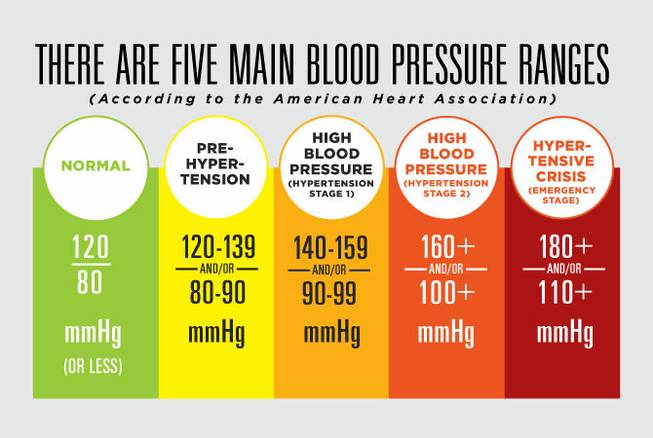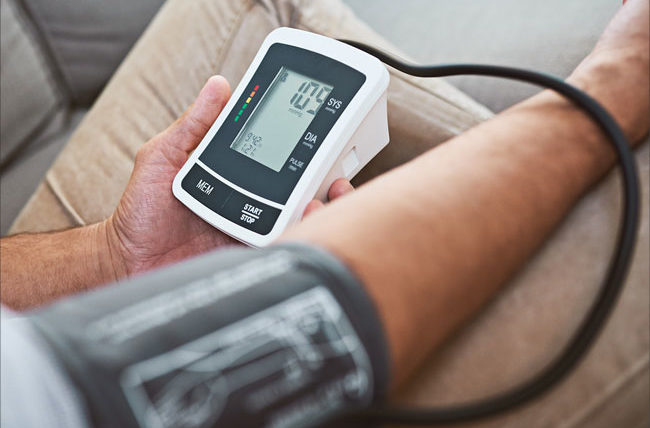Blood pressure monitors allow you to track your blood pressure at home, without needing to go to the doctor’s office or hospital. Not only are they convenient, but they can help you take care of your health by tracking blood pressure changes over time and helping you figure out when you should see a doctor about problems with your blood pressure levels. Find out more about these devices and the benefits of tracking your blood pressure with them in this article.
Why Use a BP Monitor?

Blood pressure monitors help provide you with an accurate picture of your health, which is why they’re a great way to stay on top of your blood pressure. If your doctor wants you to track your blood pressure at home, it can be an effective and easy way to get a snapshot of how you’re doing without having to make multiple trips to an office. Blood pressure monitors are also beneficial because they can improve overall patient engagement in treatment plans since people are more likely to regularly check their numbers if they’re able to do so from home. The end result of it all is that there are a lot of benefits associated with owning a blood pressure monitor!
Blood pressure monitors are an important tool for anyone looking to live a healthier life. With so many on the market today, it can be hard to decide which one is right for you. To help you decide, we’ve put together a list of features that are worth considering when you start shopping. Blood pressure monitors are available in wrist and upper arm styles, and wrist monitors tend to be more portable and convenient than upper arm models. They also tend to be less expensive than their upper arm counterparts as well. Wrist monitors are generally less accurate but they’re a great way to have peace of mind that your blood pressure is in check since it’s easy to keep track of your results from home with little effort on your part.
What Is Considered High or Low BP?

There is a major difference between blood pressure and heart health. While both are critical to your overall health, they are not one in the same. Blood pressure refers to how hard your blood pumps (and thus how much it pushes against your arteries) when your heart beats. Blood pressure should be considered in two separate phases – systolic (the top number) and diastolic (the bottom number). Systolic blood pressure is when your heart beats and pushes blood through your veins. This phase begins at birth and ends with death.
Your blood pressure reading can also be classified by whether it is a normal range, pre-hypertension or hypertension. Hypertension is known as high blood pressure, while pre-hypertension refers to levels higher than optimal but not high enough to be considered hypertension. What’s considered normal blood pressure varies based on age and gender, but most medical professionals consider anything less than 120/80 mmHg to be ideal. Pre-hypertension falls between 120/80 and 139/89 mmHg. Anything above 140/90 mmHg is considered an abnormal reading and could indicate pre-hypertension or even full-blown hypertension.
How to Read Your BP Machine
 Blood pressure is a good indicator of health and vital signs, especially if you are monitoring your blood pressure over time. There are two numbers that you should be aware of when reading your blood pressure at home with a blood pressure monitor. The top number is called systolic and it indicates how hard your heart works to pump blood around your body. So on most machines, it measures your blood pressure during the second measurement, called diastolic, between beats. A blood pressure machine will display your blood pressure in millimeters of mercury (mmHg). Normal blood pressure ranges from 120/80 mmHg to 140/90 mmHg, but many people have slightly higher or lower than normal blood pressures. You may want to consult a doctor if you find yourself consistently outside these ranges. If your blood pressure is high, there are several ways you can bring it down naturally without medication.
Blood pressure is a good indicator of health and vital signs, especially if you are monitoring your blood pressure over time. There are two numbers that you should be aware of when reading your blood pressure at home with a blood pressure monitor. The top number is called systolic and it indicates how hard your heart works to pump blood around your body. So on most machines, it measures your blood pressure during the second measurement, called diastolic, between beats. A blood pressure machine will display your blood pressure in millimeters of mercury (mmHg). Normal blood pressure ranges from 120/80 mmHg to 140/90 mmHg, but many people have slightly higher or lower than normal blood pressures. You may want to consult a doctor if you find yourself consistently outside these ranges. If your blood pressure is high, there are several ways you can bring it down naturally without medication.
Factors That Impact BP Readings
/normal-blood-pressure-fluctuations-throughout-the-day-17640971-4d1671d99142421d9b86f9695540d4ce.png) When using a blood pressure monitor, it’s important to consider factors that may affect your blood pressure readings. For example, a sudden increase in blood pressure will cause blood vessels to enlarge which may give a false reading when you check your blood pressure. Sitting down is also beneficial as it decreases stress and allows more time for your heart rate to return to normal. If you are taking certain medications like antihistamines, beta blockers or tranquilizers – these medications can cause vasodilation which may contribute to inaccurate readings from a home monitoring device. It is important to take these factors into account when monitoring and recording your own blood pressure, if it is being used for clinical purposes.
When using a blood pressure monitor, it’s important to consider factors that may affect your blood pressure readings. For example, a sudden increase in blood pressure will cause blood vessels to enlarge which may give a false reading when you check your blood pressure. Sitting down is also beneficial as it decreases stress and allows more time for your heart rate to return to normal. If you are taking certain medications like antihistamines, beta blockers or tranquilizers – these medications can cause vasodilation which may contribute to inaccurate readings from a home monitoring device. It is important to take these factors into account when monitoring and recording your own blood pressure, if it is being used for clinical purposes.
How Often Should I Check My BP?
 Keeping track of your blood pressure is one way to manage high blood pressure. Before you start tracking, you should check your blood pressure at least once a week for about three months to find out what normal is for you. You can use a home monitor during that time, but you don’t have to. Check your results against an online database to get an idea if it looks right. If not, ask your doctor to check it manually—and then make adjustments accordingly. After three months, you should be able to answer most questions about how often you need to check your blood pressure. For example, if your blood pressure changes little from day-to-day or week-to-week, then checking it weekly may be enough. But if your blood pressure fluctuates by more than 20 points, you should check it more frequently. Check with your doctor before deciding on a schedule, so that he or she can help you manage any concerns you have while you’re between visits.
Keeping track of your blood pressure is one way to manage high blood pressure. Before you start tracking, you should check your blood pressure at least once a week for about three months to find out what normal is for you. You can use a home monitor during that time, but you don’t have to. Check your results against an online database to get an idea if it looks right. If not, ask your doctor to check it manually—and then make adjustments accordingly. After three months, you should be able to answer most questions about how often you need to check your blood pressure. For example, if your blood pressure changes little from day-to-day or week-to-week, then checking it weekly may be enough. But if your blood pressure fluctuates by more than 20 points, you should check it more frequently. Check with your doctor before deciding on a schedule, so that he or she can help you manage any concerns you have while you’re between visits.
Daily Hypertension Management
 Hypertension, or high blood pressure, is a common condition that affects roughly 1 in 3 adults in America. While it doesn’t come with a lot of symptoms, hypertension does increase your risk for other conditions such as heart disease, stroke and kidney failure. That’s why it’s important to monitor your blood pressure daily; but how? One way is by using a home blood pressure monitor. Blood pressure monitors are inexpensive and portable devices that measure both your systolic and diastolic blood pressures at home. You really need to know these things when using one… To use a blood pressure monitor correctly, it is first important to set up an appointment with your doctor to determine what number is the average for you. Most doctors want to see a blood pressure reading of less than 140/90. You may have hypertension if your measurements are above that–or if they fluctuate widely from day-to-day. It’s essential to work closely with your doctor to establish a treatment plan that’s tailored to your situation.
Hypertension, or high blood pressure, is a common condition that affects roughly 1 in 3 adults in America. While it doesn’t come with a lot of symptoms, hypertension does increase your risk for other conditions such as heart disease, stroke and kidney failure. That’s why it’s important to monitor your blood pressure daily; but how? One way is by using a home blood pressure monitor. Blood pressure monitors are inexpensive and portable devices that measure both your systolic and diastolic blood pressures at home. You really need to know these things when using one… To use a blood pressure monitor correctly, it is first important to set up an appointment with your doctor to determine what number is the average for you. Most doctors want to see a blood pressure reading of less than 140/90. You may have hypertension if your measurements are above that–or if they fluctuate widely from day-to-day. It’s essential to work closely with your doctor to establish a treatment plan that’s tailored to your situation.
When checking blood pressure levels, take readings at consistent times each day—usually morning and evening—and always do so after waking up from several hours of sleep (blood pressure tends to be lower when we’re resting). Also keep track of any factors that may influence readings (like stress or alcohol consumption) so that you can factor them into calculations later on.
Final Words
Blood pressure monitors are devices that are used to measure your blood pressure. They range from highly sophisticated medical machines that are used in hospitals and other clinical settings to at-home versions, also known as blood pressure monitors. Though both kinds of blood pressure monitor may be beneficial to some extent, only trained medical professionals should use advanced equipment such as hospital-grade monitors; using them for anything else could be a bad idea. Regardless, if you’re in need of a way to keep track of your blood pressure levels at home or on-the-go (maybe you have hypertension), then consider investing in one or more blood pressure monitors for your home and/or office. Here’s what you need to know about these helpful devices and how they can benefit your life.













